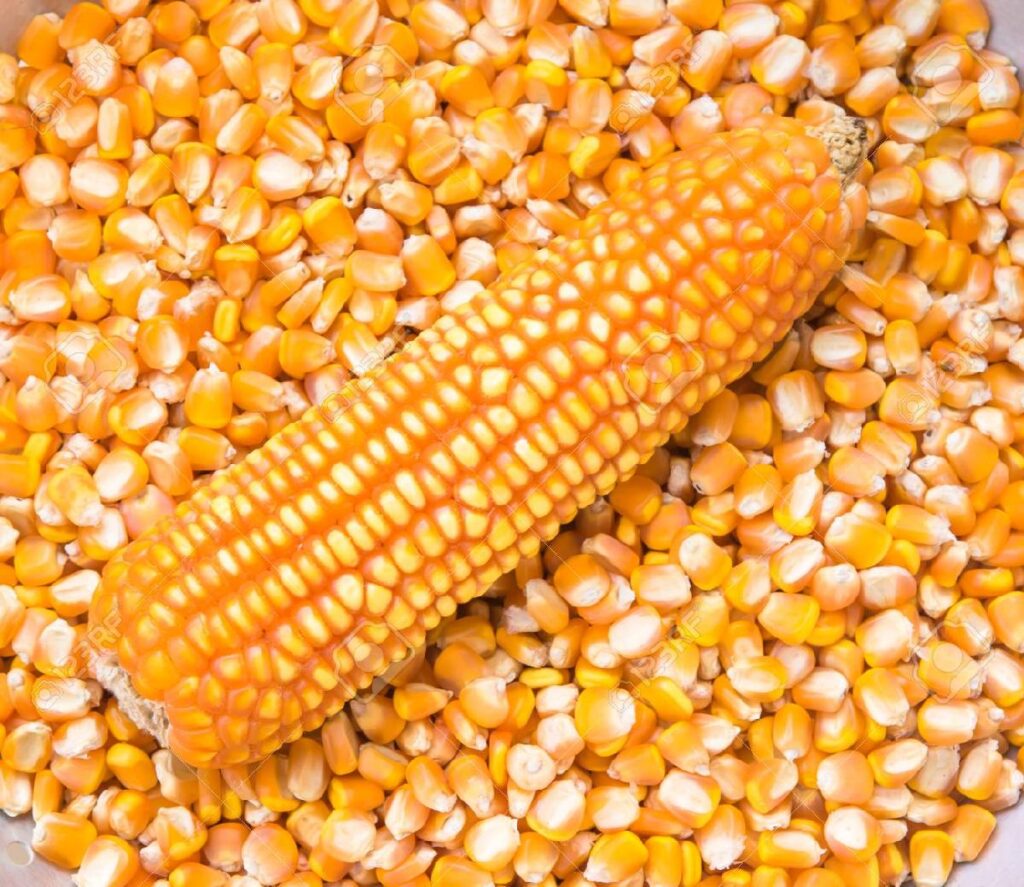Yellow Corn

Yellow Corn
In rich countries, yellow corn, often known as maize for sale, is a major feed grain. It is also a staple food grain worldwide, particularly in Africa, Latin America, and Asia. The yellow corn (maize) grain has several uses in both food (grain, flour, syrup, oil, etc.) and non-food (cosmetics, adhesives, paints, varnishes). Starch and oil are two more significant byproducts of yellow corn (maize) (Ecocrop, 2010). As a primary feed grain and a mainstay in cattle diets, maize provides the animals with energy. In determining other grains’ nutritional contents, yellow corn, or maize, is typically used as a benchmark. The processing of maize for flour (hominy feed, bran, germs, oil meal), starch (corn gluten feed, corn gluten meal), and alcohol/biofuel industries (distillers’ dry grains and solubles) can yield a wide range of byproducts that can be fed to animals.
Breeders have created a wide variety of yellow corn (maize) cultivars to suit certain climatic or agronomic conditions and applications. “Dent corn” refers to the most widely grown kind of maize that is typically used as feed. Certain types, such as popcorn, flour corn, sweet corn, and flint corn, are mostly used in cooking. To improve the industrial or nutritional value, several variations have been created, such as those with high tryptophan, high lysine, high oil, high amylose, low phytate, and so on. Cattle can digest brown midrib yellow corn (maize) more readily because it has less lignin in it. Genetically modified (GM) maize types are intended to improve grain performance, including yield increases and pesticide and herbicide tolerance.
